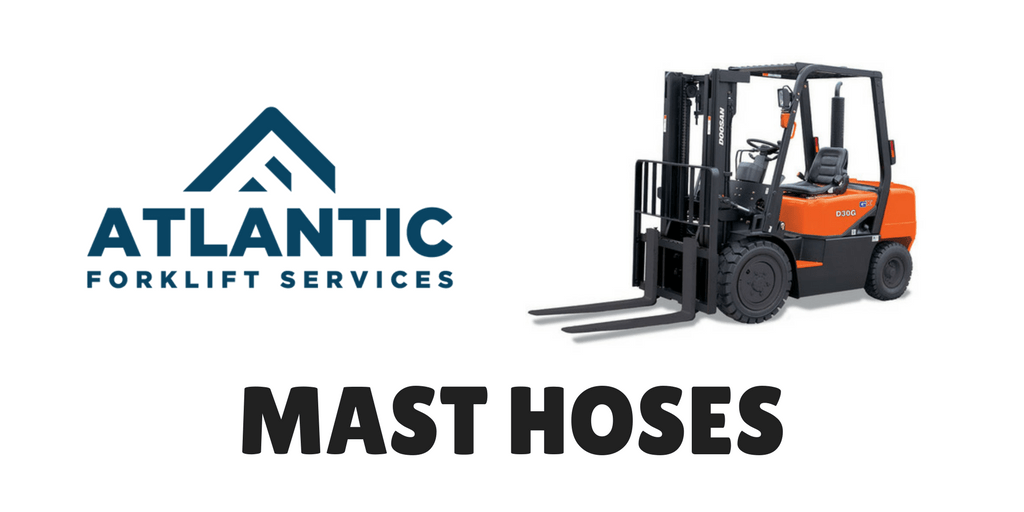 Your mast hoses don’t appear, at first glance, to do a lot of heavy lifting when it comes to your forklift, but the fact is they are critical to efficient, safe operation of your truck.
Your mast hoses don’t appear, at first glance, to do a lot of heavy lifting when it comes to your forklift, but the fact is they are critical to efficient, safe operation of your truck.
This is why a daily start-of-shift inspection requirement includes the mast hoses. Even the smallest flaw or damage to a hose can cause expensive problems.
When you’re inspecting your hoses, here are five things to look for to ensure your hoses are in good shape.
Consult your owner’s manual for the recommended inspection intervals.
Start by checking out the jackets covering the hoses. While damage to the jacket doesn’t necessarily mean the hose itself is damaged, it can be a sign something is wrong. Once the jacket is damaged, the hose inside is extremely vulnerable.
Make sure you inspect the entire length of hose. It’s easy to only look at the visible portion of the hoses, but the parts tucked under other hoses and mechanical elements of the lift need examination as well.
Any cut in the hose is a potential problem, but certain punctures and incisions in the hose may mean different things.
Cuts that appear lengthwise in the hose may mean it is making contact with the materials you are moving. Make sure the hoses are where they should be, and inside the perimeter of the mast itself.
Take a good hard look for leaking oil or other fluids. Oil on the floor is a slip hazard, that’s a best-case example. High temperature fluids may spray from some hoses causing burns and other injuries if they come in contact with the operator or other employees.
Look for twists and kinks. These can compromise the hose and impede the flow of lubricants through the lift. Once you confirm the hose is intact, consider re-routing any twisted hose to find the path of least resistance.
Our technicians spend all day long looking for trouble before it happens. They can help you find it, too. Call us at (704) 842-3242 and we’ll tackle whatever problem you may be facing.
